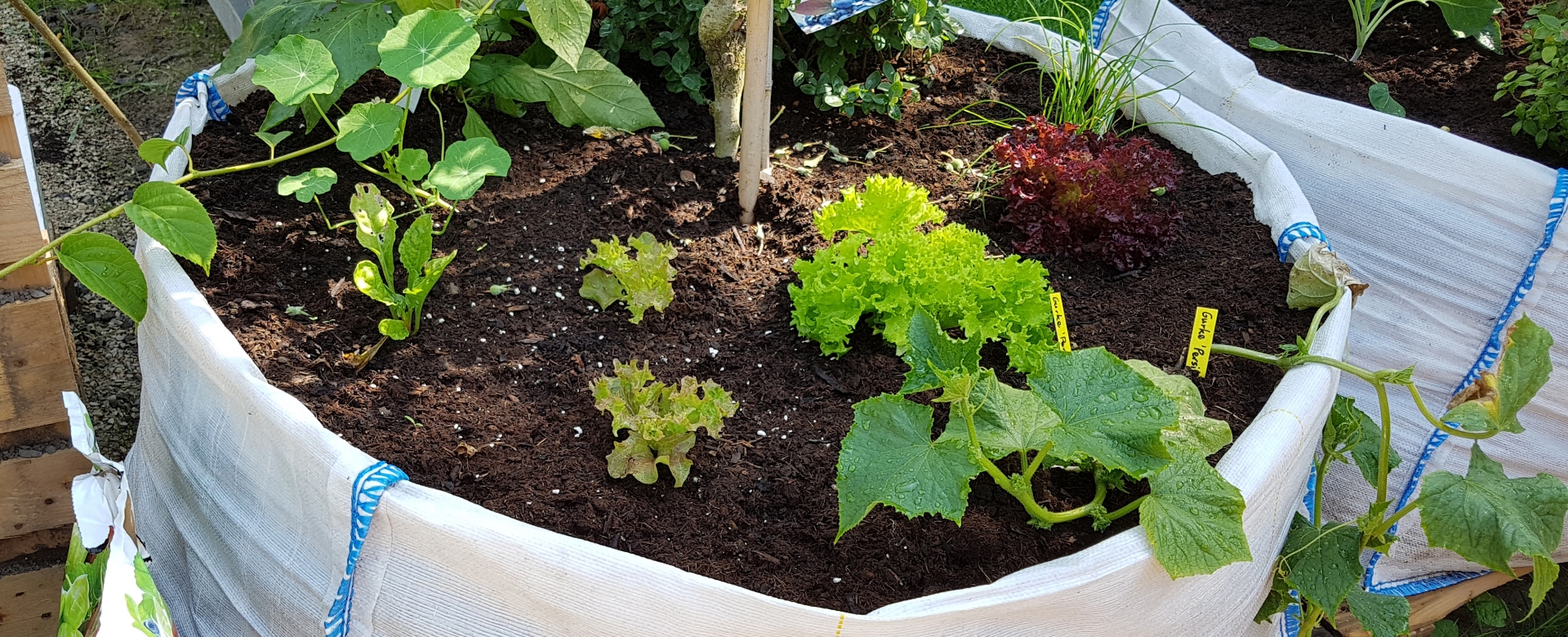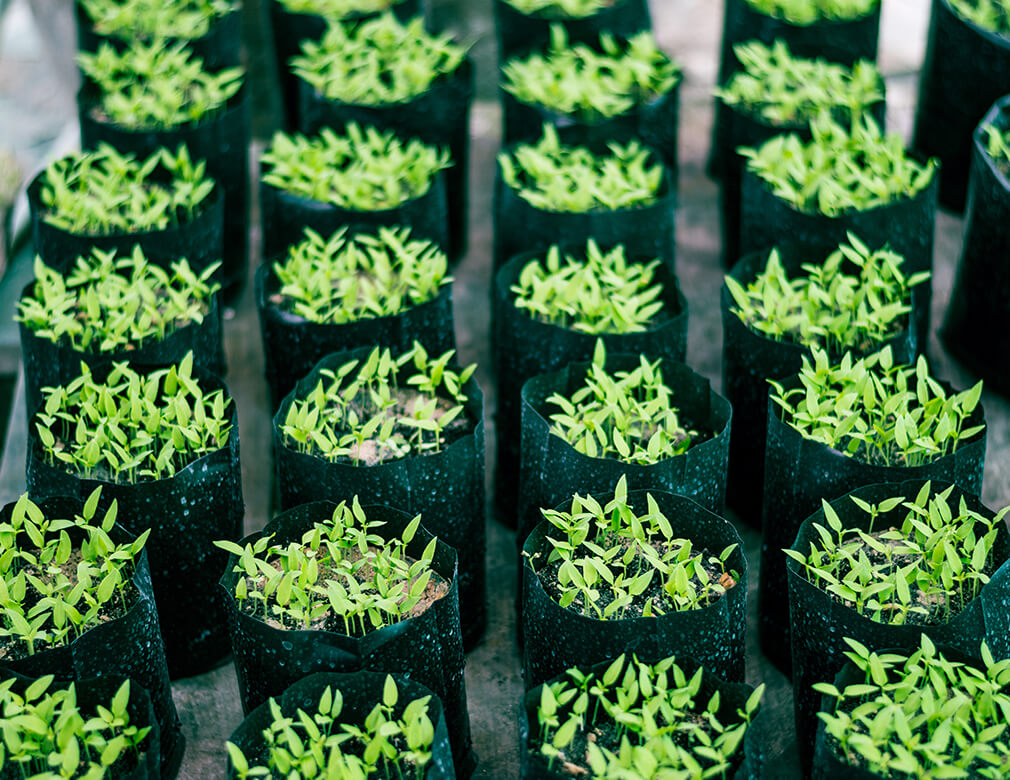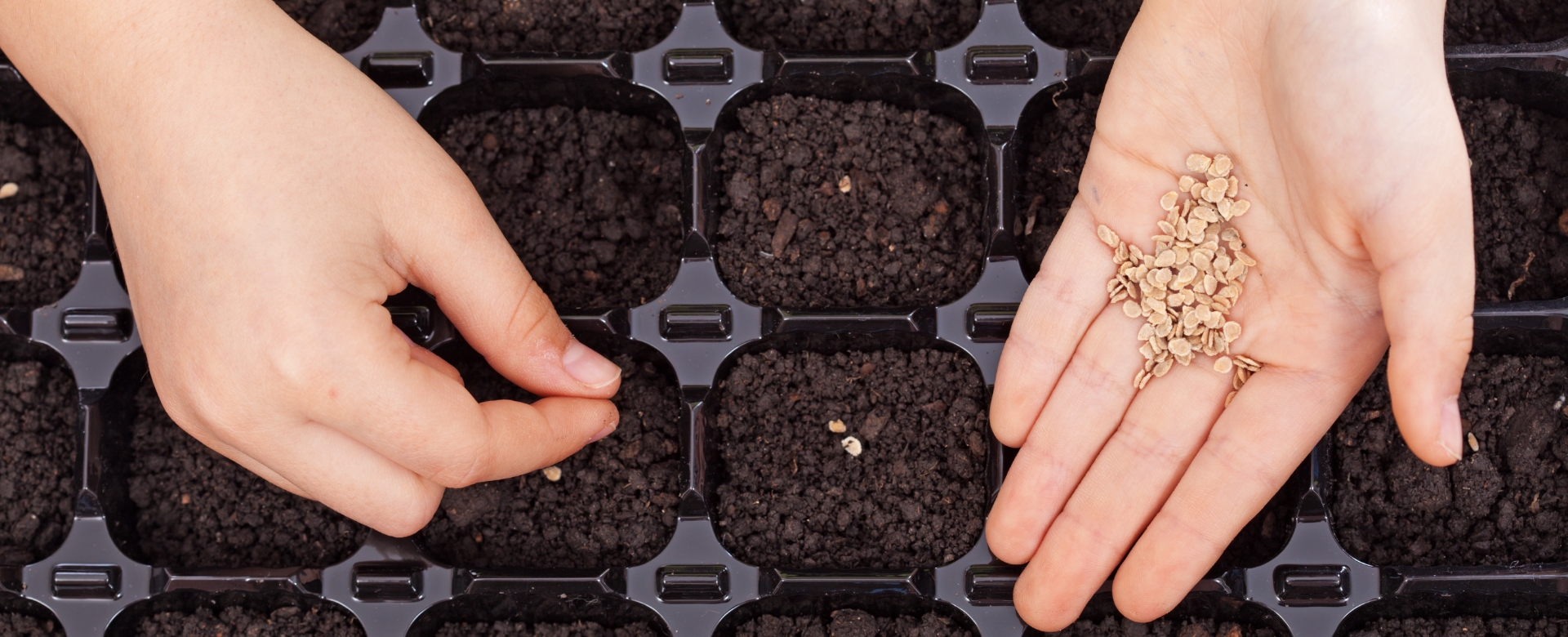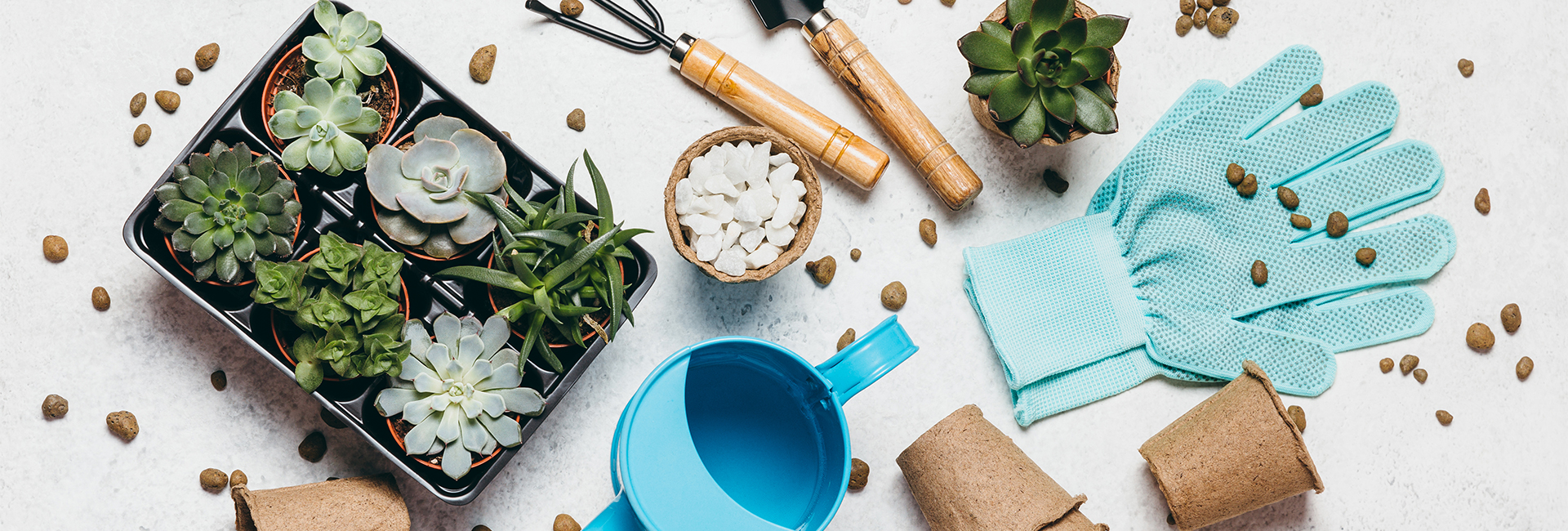What soil are you using in your garden beds? Chances are, if you’ve got a smaller garden, you’ll opt for bagged soil.
Bagged soils are cheap, readily available, and easier to move than a load of mushroom soil. But the problem is, there are a ton of different types of bagged soils. Which type is best for vegetable gardening?
Well, you get what you pay for. Bagged topsoil is cheap! But it also isn’t the best for a raised or in-ground bed.
Need some help navigating soil types? Keep reading to find the best bagged soil for vegetable gardens with recommendations.
Types of Bagged Soil (Most Common)
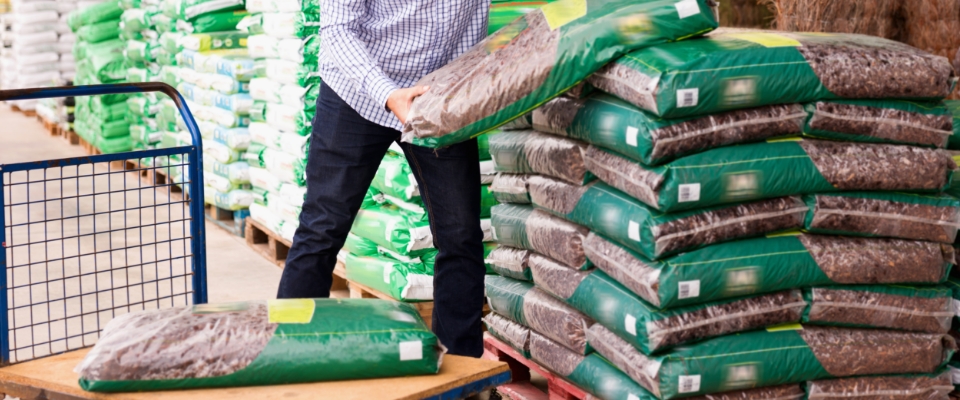
At any garden center, you’ll find a variety of bagged soils. Here’s a look at the most common types, their uses, and bagged soil products to try:
1. Topsoil
Topsoil represents the upper-most layer of soil, and it tends to be cheap! But the downside for vegetable gardening is that it doesn’t contain a high amount of organic matter. In fact, there are a lot of problems with topsoil.
It tends to be low in nutrient content, can contain weed seeds, and doesn’t contain a lot of organic matter, which can help in water retention. Bottom line, don’t fill a raised bed with bagged topsoil. You can use topsoil to amend veggie garden beds but mix it in thoroughly.
General Uses
Typically used to fill low spots in lawns. But can be used as a soil amendment for structure (just be sure to add it along with rich nutrient sources like compost).
Try This Product
If you’re starting a flower or vegetable garden, you should avoid topsoil. But as a garden amendment, Coast of Maine Monhegan Blend is a good choice.
2. Garden Soil
Garden soil is a blend of organic materials and soil. Most mixes contain topsoil, compost/manure, and other organic materials like composed forest products.
Typically, garden soil is reserved for planting in-ground beds. You would till the soil, and then mix bags of garden soil in. Generally, till to about 12 inches deep. Bagged garden soil tends to have good texture and drainage.
General Uses
Amending your in-ground beds by mixing them in garden soil. In raised beds, garden soil is usually heavier. Therefore, you might work in perlite to improve drainage if you plan to use garden soil in a raised bed.
Try This Product
Fox Farm Original Planting Mix. Contains worm castings and bat guano. This garden soil blend has great water retention and has a deep, earthy richness.
3. Potting Soil
Super light and formulated for potted plants, potting soil is great for container-grown melons and raspberries. Potting blends drain easily and include finer and organic materials (like peat moss, perlite, coco coir, and decomposed bark) which improve water retention.
General Uses
In a raised bed, potting soil would likely dry out quickly and may need more frequent watering and fertilization. Potting soil is best for container-grown vegetables and flowers.
Recommendations
Roots Organics Potting Mix. A best-seller in Homegrown Outlet, the Original Potting Mix from Roots works great (and the bag doubles as a growing container).
4. Manure / Compost
Manure typically is high in nutrient content. Black Kow, for instance, a popular brand, contains 10x more nutrients than typical garden soil.
But don’t let that fool you. You can overfeed plants, or “burn” them (if the manure hasn’t been properly aged). This is due to the high ammonia content of fresh manure.
General Uses
Amend your vegetable beds with compost or manure. Texas A&M Agilife Extension recommends 20-30 pounds of manure per 100 square feet of garden.
Try This Product
Black Kow is a good brand that’s sold at just about every garden center. Black&Gold Compost is OMRI listed and I’ve used it when I run out of homemade compost.
5. Raised Bed Soil
Raised bed soil is a pre-mixed bagged soil blend. It’s designed for filling raised beds, because it is designed to be well-draining.
Raised bed soil is usually similar in components to garden soil. But it may include a bit more perlite or other ingredients to improve drainage. It’s almost like a blend of potting and garden soils, depending on the brand.
General Uses
Use it to fill a raised bed. It’s OK to use in smaller containers too but will be denser than a potting mix.
Try This Product
Coast of Maine Castine Blend. This OMRI listed soil comes from Coast of Maine, a best-selling brand in Homegrown Outlet. Super-rich blend that your raised beds will love.
What About Specialty Bagged Soil Blends?
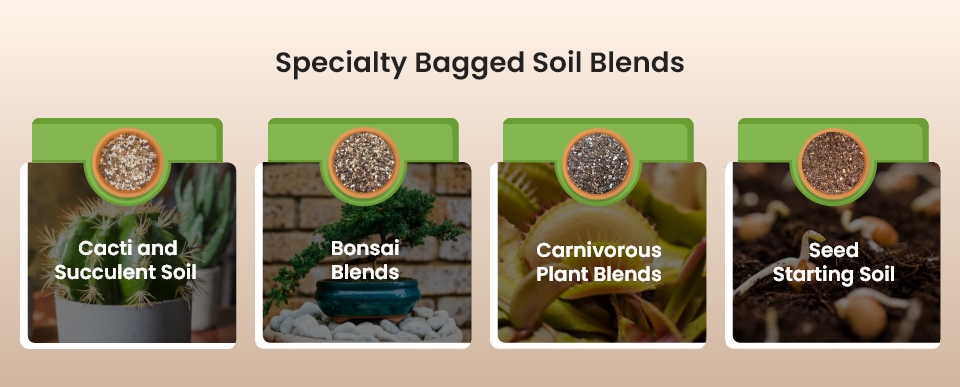
You now know the most common types of soil you’ll find at garden centers. But there will inevitably be blends for special use cases like:
1. Cacti and Succulent Soil – Cacti and succulents prefer soil that drains quickly. Typically contains a high proportion of sand, perlite, and gravel to create fast drainage and prevent root rot.
2. Bonsai Blends – Bonsai trees need excellent drainage to prevent root rot. These blends typically include materials like coarse sand, pumice, and lava rock to promote aeration with some moisture retention.
3. Carnivorous Plant Blends – Yes, you did read that right. Even “flesh-eating” plants need special soil. It’s usually moss-based and low in nutrients to mimic bog conditions.
4. Seed Starting Soil – Seed starting soils are generally super-lightweight and almost dusty in texture. These blends provide ideal moisture-retention and drainage for starting seeds indoors.
What’s the Best Bagged Soil for Vegetable Gardens?
Some things you should look at include drainage, aeration, and nutrient content. Ultimately, the best bagged soil for vegetable gardens generally depends on the type of garden.
For a raised bed, use a specially formulated raised bed soil. You can also create your own with garden soil and a bit of perlite.
For new in-ground beds, you can amend them with garden soil. Don’t just layer it on top; deeply work it into the soil. In addition, consider adding compost or manure.
What’s Best for Flower Beds?
This really depends on the type of flowers you’re growing. Some flowers like more acidity, while others do well in just about anything.
For in-ground beds, the best soil is:
- Raised bed mix: This is an excellent choice, particularly for new or rebuilt flower beds, due to drainage and aeration. You can add compost to enrich it.
- Garden soil: Generally, this type is a good option for established flower beds as an amendment. Just spread it around the base of existing flowers and work into areas away from flowers.
For container-grown flowers, the best soil is:
- Potting mix: This is the best choice for container gardening. Potting mix is a lightweight, soilless blend specifically formulated for container plants.
Tips for Choosing Bagged Soil

One tip: Buy a bag or two before you invest in a whole pallet! Then, test each bag.
The squeeze test is a simple test you can do, which will help you understand quality. Simply squeeze a handful of soil. It should hold together, until you brush a finger over it (and it will break up).
If the soil passes, it’s usually a rich, loamy blend. This will generally tell you if the soil has a good amount of organic matter and some water retention.
You should also look for these tell-tale signs of quality soil:
- Appearance – Dark and rich in color. Deep brown or even black. However, color is not always indicative; don’t just assume it’s good soil because it’s dark brown or black.
- Smell – Should smell earthy and organic. Foul odors might mean the soil was waterlogged (if it’s not covered, for example); this can lead to contamination.
- Ingredients – You’ll find these on the label. Look for rich, organic sources. Compost, manure, even oyster shells, to name a few. You can check nutrient content too.
- Consistency – Look for uniform texture. A raised bed blend, for example, should run freely through your fingers, without any large clumps
How to Use Bagged Soils
Here’s the thing: You can always amend soil. It might cost you more in the long run, but if you’ve “messed up” and used topsoil in a garden bed, no worries! Just amend with compost/manure and soil blends, and you’ll be fine.
However, if you’re gearing up for spring planting, here are a few ways you can use these various bagged soil types for best effect:
1. Manure or Compost
Not for direct planting in spring. Manure and compost are amendments for existing soil. Use them if your soil lacks nutrients, or you want to improve structure. Some spring tasks include:
- Filling New Beds – Mix aged manure or compost (at least 6 months old) into the top 6-12 inches of topsoil at a ratio of 3:1 (3 parts topsoil, 1 part compost).
- Existing Beds – Top dress the bed with a 1-2 inch layer of aged compost. Rake it in lightly or leave it on the surface.
2. Topsoil
Ideal for filling raised beds (along with compost and organic matter), filling low spots in lawns, or creating new garden areas. You can use it in the spring to:
- Fill Raised Beds – Mix in with aged compost or manure (3:1 ratio). However, it’s best to use a raised-bed blend.
- Level Your Lawn – Fill in low spots or uneven areas. Tamp it down and then reseed. You can do this while you add organic material to your lawn.
3. Garden Soil / Raised Bed Soil
A good all-purpose option for planting vegetables, flowers, and shrubs directly in the ground or in containers. Spring uses include:
- Direct Sowing – Once soil temperatures are warm enough (usually after danger of frost has passed), you can directly plant seeds in garden soil.
- Planting Seedlings – Amend existing garden beds with this if needed before planting seedlings outdoors.
4. Potting Soil
Used for new container plantings or to refresh your existing potted plants. Some spring tasks include:
- New Container Planting – Fill pots and containers for plantings of flowers, herbs, and vegetables.
- Repotting – Use fresh potting soil to repot plants that have overgrown their containers.
- Seed Starting – Not ideal for seed starting but has similar properties. It can be used as a replacement for indoor seed starts.
Pro Tip. You can create a no-dig flower garden directly in the bag. Simply add some drainage holes to the bottom and cut a flap on top. Then, plant your veggies directly in the bag.
Wrapping Up
When I first started gardening, I filled my raised beds with topsoil. It was cheap, and I didn’t really know anything about soil health and structure. Did the plants grow? They did. They were fine.
But there were some struggles that summer, and it wasn’t until I fortified the soil with compost and fertilizer in Year 2 that the plants really took off. So, although you might pay more for the best bagged garden soils, it’s worth it. Your plants will be happier, they’ll have plenty to eat, and you’ll be rewarded with faster- and stronger-growing plants.
Ultimately, though, most plants are resilient. Although soil matters a lot, don’t fret if you make a mistake. A bag of worm castings and compost might make all the difference.
Shop at Homegrown Outlet for all your gardening needs. Visit a location in Upstate New York today.

